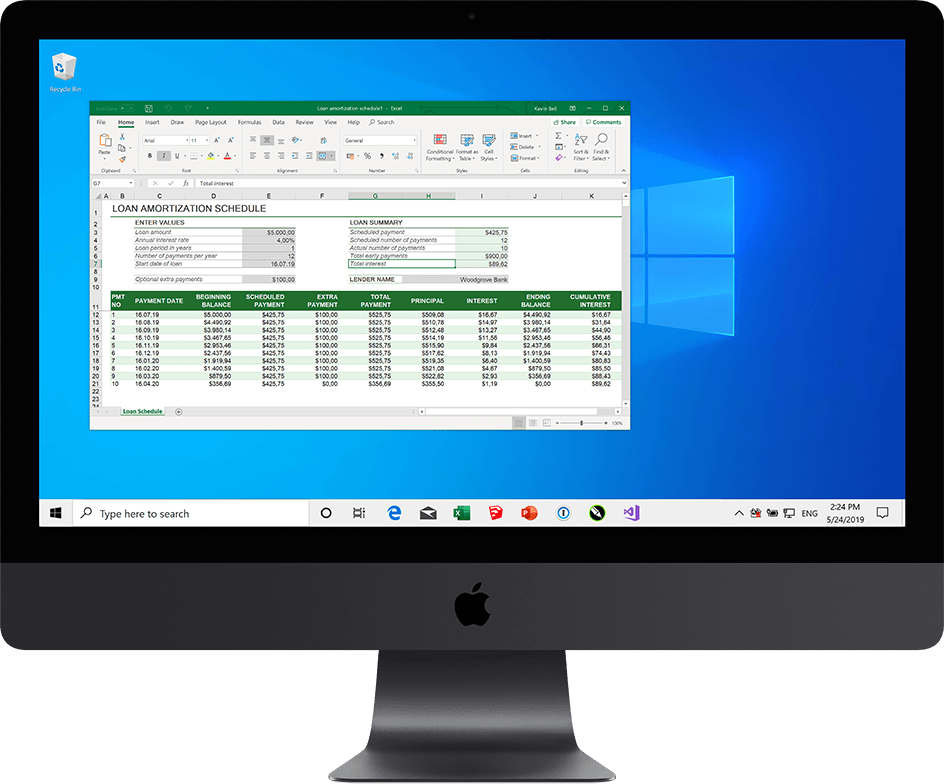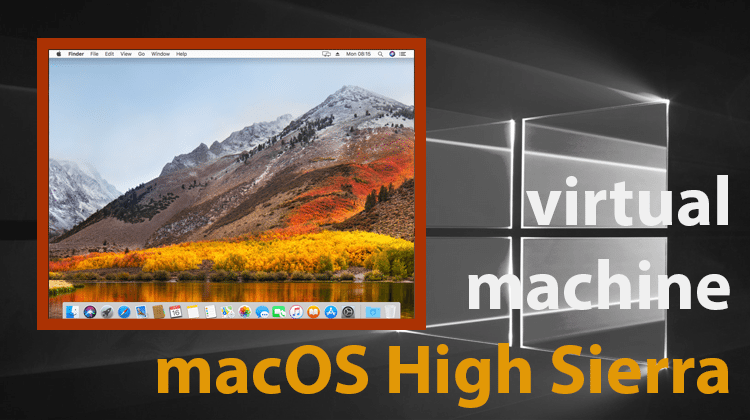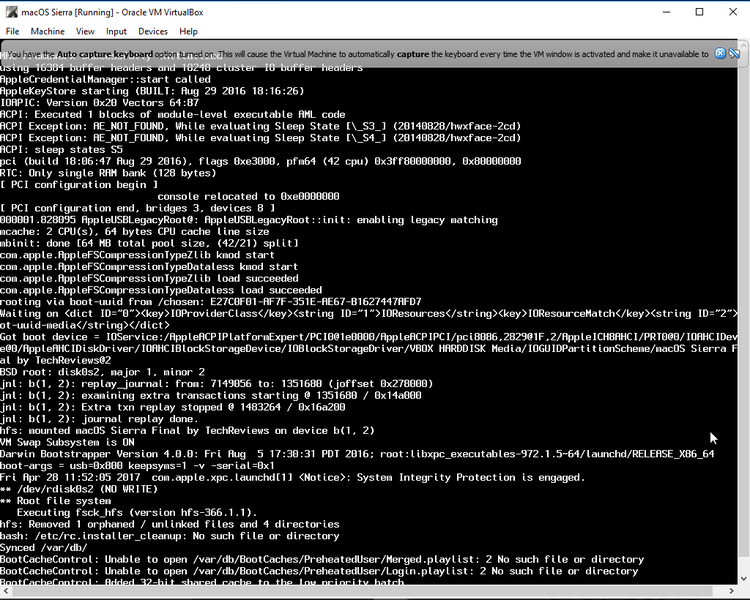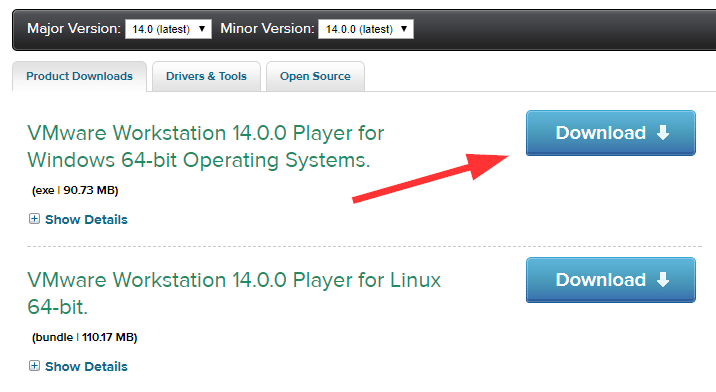

- IMAC VIRTUALMACHINE FULL VERSION
- IMAC VIRTUALMACHINE PRO
- IMAC VIRTUALMACHINE SOFTWARE
- IMAC VIRTUALMACHINE TRIAL
- IMAC VIRTUALMACHINE PROFESSIONAL
Who this is for: If you want to run Windows nearly exclusively on your Mac, Boot Camp is almost certainly the choice. If you own an older Mac, you might experience a significant performance jump versus virtualization. Therefore, only the active operating system uses your system's graphics card and processor. On the flip side, with Boot Camp, there's no hardware sharing. This means, for example, you can't check your Apple Mail at the same time as you're using Windows. The most significant disadvantage of using Boot Camp over virtualization is that you can't access your primary operating system simultaneously. All of the best Macs now on the market use Apple silicon. Note: Bootcamp does not work with Apple silicon Macs. Instead, it lets you boot your Mac into another operating system at startup, either a separate version of macOS or a copy of Windows 8, Windows 8.1, or Windows 10.
IMAC VIRTUALMACHINE SOFTWARE
Built into macOS, the software isn't run on virtualization technology. If you rather not use a third-party solution, consider Apple's Boot Camp. Who this is for: Open-source software is preferred by many computer users, and for those folks, VirtualBox is a great choice. It's available for Mac, Windows, Linux, and Solaris too. VirtualBox is available to download online. Otherwise, pay for a copy of Parallels 15 or VMware Fusion 11.5.
IMAC VIRTUALMACHINE PROFESSIONAL
If you're an IT professional or someone with the time to play around with open-source software, by all means, consider VirtualBox. Unfortunately, VirtualBox doesn't provide technical support because it's open-source, although there's an active user forum.īut again, it's important to circle back around to VirtualBox's interface, which isn't nearly as slick or easy to use as the others. Another advantage: Oracle has released VirtualBox as open-source, which offers more flexibility to end-users than the other solutions. Perhaps the most crucial reason to consider VirtualBox is that it's free, at least for personal or educational use. Despite this, some essential differences between it and Parallels and VMware Fusion might make it a better solution, depending on your situation. Unfortunately, Oracle's VirtualBox is the least polished virtualization title on this list. When using software, I expect a polished experienced. Fusion is probably the one for you if you're familiar with VMWare products.

Who this is for: VMWare's Fusion 12 is nearly as good as Parallels 17.

IMAC VIRTUALMACHINE PRO
If you're familiar with other VMWare products, including Workstation Pro for Windows, Fusion is probably the path for you, although check out both products if you can.įusion 12 is available for download (opens in new tab) from the VMWare website.

The VMWare Fusion interface doesn't look nearly as nice as the one offered by Parallels, but it's close. All versions come with a 14-day free trial. A professional version is also available for IT environments.
IMAC VIRTUALMACHINE FULL VERSION
It also supports Touch Bar on a MacPro Pro.įusion 12 is available for $149 for a full version and $79 for an update. Beginning with Fusion 11, support was added for Apple's Metal graphics system. With Fusion's unity mode, you can run Windows-based applications on your computer as if they were Mac apps. In this case, you can use Fusion with Windows 11 (or another operating system) through a window on your Mac desktop or in full-screen mode. Like Parallels, Fusion lets you create a virtual machine through software that can run separately from your macOS installation. Created by Dell Computer's VMWare, the latest version of Fusion (12) has been designed to take advantage of the latest macOS tools. Parallel's closest virtualization competitor, Fusion, is another great choice for consumers. Grab a copy if you're looking for a solution that just works. Who this is for: Parallel offers a no-nonsense approach to virtualization. New versions of Parallels typically arrive when Apple releases a new version of macOS, usually in the fall. Once a new version gets released, you can download it from the Parallels website. The professional version does include free upgrades. The former doesn't include free updates to future versions of Parallels Desktop but also has no expiration date. The home version is $80 or $50 for an upgrade, while the professional version is $100 per year.
IMAC VIRTUALMACHINE TRIAL
Parallels Desktop 17 is the company's flagship consumer product and is available through a free trial (opens in new tab), regardless of the version you choose. It also works with macOS Big Sur 11.1 or newer, macOS Catalina 10.15.7 or newer, macOS Mojave 10.14.6 or newer, and macOS High Sierra 10.13.6 or newer. Beyond this, Parallels Desktop 17 is also fully compatible and optimized for macOS Monterey.


 0 kommentar(er)
0 kommentar(er)
